
EN: (T) Dorsal attachment point, (A/2) Sternal attachment elements,
(B) Shoulder straps, (C) Thigh loops buckles, (D) Adjustment buckles,
(E) Sternal sling and buckle, (F) Load indicators.
Material of textile parts: polyester.
Material of metallic part: zinc plated carbon steel.
IT: (A) Punto di attacco dorsale, (A/2) Elementi di attacco sternale,
(B) Spallacci, (C) Fibbie per gli anelli della coscia, (D) Fibbie di
regolazione, (E) Imbracatura e bbia sternale, (F) Indicatori di carico.
Materiale delle parti tessili: poliestere.
Materiale della parte metallica: acciaio al carbonio zincato.
FR: (A) Point d’attache dorsal, (A/2) éléments d’attache sternaux, (B)
sangles d’épaule, (C) boucles de cuisses, (D) boucles d’ajustement,
(E) anneau de sangle et boucle sternales, (F) Indicateurs de charge.
Matériau des pièces textiles : polyester.
Matériau de la partie métallique : acier au carbone zingué.
DE: (A) Dorsaler (hinterer) Befestigungspunkt, (A/2)
Sternum (vorn)-Befestigungselemente, (B) Schultergurte, (C)
Oberschenkelschlaufen-Schnallen, (D) verstellbare Schnallen, (E)
Sternum-Schlinge und -Schnalle, (F) Belastungsanzeigen.
Material der textilen Komponenten: Polyester.
Material der Metalles: verzinkter Kohlenstoffstahl.
EN: Category III Personal Protective Equipment 8W0.080 “SIERRA
DUO TURBO” (g. 1) is:
- a full body harness for connection to fall arrest systems, tted with
a dorsal attachment point identied with (A) and with a sternal
attachment point consisting of two attachment elements identied
with (A/2);
- part of a system protecting against impact caused by fall from a
height;
- certied according to standards EN 361:2002.
M/L
8W0083*****
XL
8W0085*****
A (cm) 72-105 89-130
B (cm) 50-62 62-80
(g) 850 900
SIZE
A
***** = colours indices TAILLE • GRÖSSE
IT: Categoria III Il dispositivo di protezione individuale 8W0.080 “SIER-
RA DUO TURBO” (g. 1) è:
- un’imbracatura a corpo intero per il collegamento ai sistemi anticaduta,
dotata di un punto di attacco dorsale identicato con (A) e di un punto
di attacco sternale costituito da due elementi di attacco identicati
con (A/2);
- parte di un sistema di protezione contro gli urti causati dalle cadute
dall’alto;
- certicato secondo le norme EN 361:2002.
FR: L’équipement de protection individuelle de catégorie III 8W0.080
«SIERRA DUO TURBO» (g. 1) :
- est un harnais complet pour connexion aux systèmes d’arrêt
des chutes, équipé d’un point d’attache dorsal identié par (A) et
d’un point d’attache sternal constitué de deux éléments d’attache
identiés par (A/2) ;
- fait partie d’un système de protection contre les chocs causés par une
chute de hauteur ;
- certiés selon les normes EN 361:2002.
DE: Kategorie III Persönliche Schutzausrüstung 8W0.080 „SIERRA
DUO TURBO“ (Abb. 1) ist:
- ein Ganzkörper-Geschirr zur Verbindung mit Absturzschutzsystemen,
das mit einem mit gekennzeichneten Befestigungspunkt am
Dorsaler (A) und mit einem Befestigungspunkt am Sternum, der aus
zwei mit (A/2) gekennzeichneten Befestigungselementen besteht,
ausgestattet ist;
– ein Teil eines Systems zum Schutz von Stürzen aus großer Höhe;
– eine gemäß EN 361:2002 Typ A zertizierte persönliche
Schutzausrüstung
NOMENCLATURE • TERMINOLOGIE
NOMENCLATURE • NOMENCLATURA
DESCRIPTION • DESCRIZIONE
DESCRIPTION • BESCHREIBUNG
2
D
E
A/2
F
C
B
A
1
3
4
STERNUM
A/2 A
10cm
5cm
5cm
DORSAL
ARMPIT
ED
DRESS ON CLOSE
THIGH LOOPS
BUCKLE-UP
STERNAL TA PE
FITTING
C
ZZV05580 Rev.0
SIERRA DUO TURBO
KONG s.p.a.
Via XXV Aprile, 4 - (zona industriale)
I - 23804 MONTE MARENZO (LC) - ITALY
Tel +39 0341630506 - Fax +39 0341641550 - [email protected]
8W0.080
Stáhněte si překlad ve vašem jazyce - Laden Sie die Übersetzung in
Ihrer Sprache herunter - Download the translation in your language
- Bájate la traducción en tu idioma - Télécharger la traduction dans
vostre langue - Scarica la traduzione nella tua lingua - Download
de vertaling in je eigen taal - Pobierz tłumaczenie w twoim języku
- Faça o download da tradução no seu idioma - Скачайте перевод
на ваш язык - 下载您的语言的译文

8 – SPECIFIC INFORMATION
Fig. 3 – Dressing – First of all check the size, choosing the correct one for
you (see SIZE table). To t the harness correctly:
- loosen the buckles (C and D);
- unthread the sling (E) from its buckle;
- holding the harness by the dorsal attachment point (A) spread out the
shoulder straps (B);
- slip your arms into the shoulder straps (B);
- close the buckles of the thigh loops (C);
- thread the sternal sling (E) through its buckle;
- adjust the harness tightening the buckles (D and D) and check the
attachment elements (dorsal and sternal) position;
- position the exceeding slings in the elastic loops.
Fig. 4 –Attachment points – The dorsal attachment point (A) and the
attachment elements (A/2) are suitable to be used in fall arrest systems.
Compatibility – This device has been designed to be used with:
- belts according to EN358;
- connectors according to EN362;
- energy absorbers according to EN355;
- rope adjustment devices according to EN12841 type A;
- guided fall arresters according to EN353-1 o EN353-2.
Important:
- if load indicators (F) are unstitched replace the device;
- The PPEs composing the fall prevention/protection system must properly be
selected according to the weight of the user and the condition of applica-
tion, paying specially attention to energy absorbing elements;
- this device is only a part of a system preventing/protecting against impact
caused by fall from a height and therefore it shall be connected to other de-
vices (i.e. shock absorber, ropes, etc.) in order to obtain a fall arrest system
suitable to the situation and conform to current regulations;
- during use regularly check:
- the fastening of the buckles (C and D);
- if the device is undamaged.
Warning:
- do not connect one only attachment element, they shall be used as
a pair: the sternal attachment (A/2) consists of two attachment ele-
ments;
- prolonged suspension on the harness, especially in motionless con-
ditions, may cause harness hang syndrome (or suspension trauma)
that can lead to loss of consciousness and even death.
9 – PRE AND POST USE CHECKS
Before and after use, make sure that the device is in an efcient condition and
that it is working properly, in particular, check that:
- it is suitable for the intended use;
- load indicators (F) are intact;
- has not been mechanically deformed;
- does not show cracks, wear, corrosion and oxidation;
- stitching are intact, and there are no cut or loose threads;
- buckles (C and D) function correctly (locking, adjusting and locking);
- textile parts do not have cuts, burns, chemical residues, excessive hair,
wear, in particular check the areas in contact with metal components
(buckles, attachment point, etc..);
- markings are legible.
Before use and in a position that is completely safe, on each occasion check
that the device holds correctly by putting your weight on it.
8 – INFORMAZIONI SPECIFICHE
Fig. 3 - Vestizione - Prima di tutto controllare la taglia, scegliendo quella
giusta per se stessi (vedere tabella DIMENSIONI). Per montare correttamente
l’imbracatura:
- allentare le bbie (C e D);
- slare l’imbracatura (E) dalla sua bbia;
- tenendo l’imbracatura per il punto di attacco dorsale (A) stendere gli spallacci
(B);
- inlare le braccia nelle bretelle (B);
- chiudere le bbie dei cosciali (C);
- inlare l’imbracatura sternale (E) attraverso la sua bbia;
- regolare l’imbracatura stringendo le bbie (D) e controllare la posizione degli
elementi di ssaggio (dorsale e sternale);
- posizionare le imbracature in eccesso nei loop elastici.
Fig. 4 - Punti di attacco - Il punto di attacco dorsale (A) e gli elementi di
attacco (A/2) sono adatti ad essere utilizzati nei sistemi di arresto caduta.
Compatibilità - Questo dispositivo è stato progettato per essere utilizzato
con:
- cinghie secondo norma EN358;
- connettori secondo norma EN362;
- assorbitori di energia secondo norma EN355;
- dispositivi di regolazione della fune secondo norma EN12841 tipo A;
- dispositivi anticaduta guidati secondo norma EN353-1 o EN353-2.
Importante:
- se gli indicatori di carico (F) sono senza cuciture, sostituire l’apparecchio;
- I DPI che compongono il sistema di prevenzione/protezione anticaduta
devono essere opportunamente selezionati in funzione del peso dell’utente
e delle condizioni di applicazione, prestando particolare attenzione agli
elementi che assorbono energia;
- questo dispositivo è solo una parte di un sistema che previene/protegge
dagli urti causati da una caduta dall’alto e quindi deve essere collegato ad
altri dispositivi (ossia ammortizzatore, funi, ecc.) per ottenere un sistema
anticaduta adatto alla situazione e conforme alle normative vigenti;
- durante l’uso controllare regolarmente:
- il ssaggio delle bbie (C e D);
- se il dispositivo non è danneggiato.
Avvertenze:
- non collegare un solo elemento di ssaggio, essi devono essere uti-
lizzati in coppia: l’attacco sternale (A/2) è costituito da due elementi
di ssaggio;
- la sospensione prolungata sull’imbracatura, soprattutto in condizioni
di immobilità, può causare la sindrome da sospensione dell’imbra-
catura (o trauma da sospensione) che può portare alla perdita di co-
scienza e persino alla morte.
9 - VERIFICHE PRE E POST USO
Prima e dopo l’uso, assicurarsi che il dispositivo sia in condizioni efcienti e
che funzioni correttamente, in particolare, vericare che:
- è adatto all’uso previsto;
- gli indicatori di carico (F) sono intatti;
- non è stato deformato meccanicamente;
- non mostra crepe, usura, corrosione e ossidazione;
- le cuciture sono intatte e non ci sono li tagliati o allentati;
- le bbie (C e D) funzionano correttamente (bloccaggio, regolazione e
bloccaggio);
- le parti tessili non presentano tagli, bruciature, residui chimici, peluria in
eccesso, usura, in particolare controllare le zone a contatto con i componenti
metallici (bbie, punto di attacco, ecc.);
- i segni sono leggibili.
Prima dell’uso e in una posizione completamente sicura, vericare ogni volta
che il dispositivo regga correttamente appoggiandovi sopra il proprio peso.
8 – INFORMATIONS SPÉCIFIQUES
Fig. 3 – Habillage – Avant de mettre le harnais, vérier que la taille soit
adéquate (voir le tableau des tailles « SIZE ») Pour que le harnais soit bien
ajusté :
- desserrer les boucles (C et D) ;
- détacher l’anneau de sangle sternal (E) de la boucle correspondante ;
- en tenant le harnais par le point d’attache dorsal (A), écarter les sangles
d’épaule (B) ;
- glisser vos bras dans les bretelles (B) ;
- fermer les boucles des cuisses (C) ;
- enler l’anneau de sangle sternal (E) dans la boucle correspondante ;
- ajuster le harnais en tirant sur les boucles (D) et vérier la position des
éléments d’attache (dorsale et sternale) ;
- positionner les anneaux de sangle excédentaires dans les boucles
élastiques.
Fig. 4 – Points d’attache – Le point d’attache dorsal (A) et les éléments de
xation (A/2) peuvent être utilisés dans les systèmes d’arrêt des chutes.
Compatibilité – Ce dispositif a été conçu pour être utilisé avec :
- des ceintures conformément à la norme EN358 ;
- des connecteurs conformément à la norme EN362 ;
- des absorbeurs d’énergie selon la norme EN355 ;
- des dispositifs de réglage des cordes selon la norme EN12841 type A ;
- des antichutes guidés selon la norme EN353-1 ou EN353-2.
Important :
- si les indicateurs de charge (F) sont décousus, remplacer le dispositif ;
- Les EPI composant le système de prévention/protection contre les chutes
doivent être choisis correctement en fonction du poids de l’utilisateur et
des conditions d’application, en accordant une attention particulière aux
éléments d’absorption d’énergie ;
- ce dispositif ne constitue qu’une partie d’un système de prévention/protection
contre les chocs provoqués par une chute de hauteur et doit donc être
connecté à d’autres dispositifs (c’est-à-dire amortisseur, cordes, etc.) an
d’obtenir un système d’arrêt des chutes adapté à la situation et conforme
aux réglementations en vigueur ;
- lors de l’emploi, vérier régulièrement :
- la xation des boucles (C et D) ;
- si le dispositif n’est pas endommagé.
Attention :
- ne jamais se lier à un seul élément d’attache, ils doivent être utilisés
en paire : l’attache sternale (A/2) se compose de deux éléments d’at-
tache ;
- une suspension prolongée au harnais, en particulier dans des condi-
tions d’immobilité, peut provoquer le syndrome du harnais (ou syn-
drome de suspension) qui peut causer une perte de conscience et
même la mort.
9 - VÉRIFICATIONS AVANT ET APRÈS L’UTILISATION
Avant et après utilisation, s’assurer que le dispositif est en bon état et
fonctionne correctement, vérier notamment que :
- il convient à l’utilisation prévue ;
- les indicateurs de charge (F) sont intacts ;
- il n’a pas été tordu mécaniquement ;
- il ne présente pas de ssures, d’usure, de corrosion et d’oxydation ;
- les coutures sont intactes, et qu’il n’y a pas de ls coupés ou détachés ;
- les boucles (C et D) fonctionnent correctement (verrouillage, réglage et
blocage) ;
- les parties textiles ne présentent pas de coupures, de brûlures, de résidus
chimiques, d’excès de l, d’usure, vérier notamment les parties en contact
avec les composants métalliques (boucles, point d’attache, etc.) ;
- les marques sont lisibles.
Avant l’emploi et dans une position de sécurité absolue, s’assurer que le
dispositif tienne correctement en effectuant des essais de suspension.
8 – SPEZIFISCHE ANGABEN
Abb. 3 - Ausrüsten - Überprüfen Sie zunächst die Größe und wählen Sie
die, für Sie, richtige Größe aus (siehe Größentabelle). Um das Geschirr
richtig zu befestigen:
- lösen Sie die Schnallen (C und D);
- ziehen Sie die Schlinge (E) aus ihrer Schnalle heraus;
- halten Sie den Gurt an dem dorsalen (hinteren) Befestigungspunkt (A) und
spreizen der Schultergurte (B);
- schlüpfen Sie Ihre Arme in die Schultergurte (B);
- schließen Sie die Schnallen der Oberschenkelschlaufen (C);
- fädeln Sie die Brustschlinge (E) durch die entsprechende Schnalle;
- justieren Sie das Geschirr durch die Regulierung der Schnallen (D) und
überprüfen die Position der Befestigungselemente (vorne und hinten);
- platzieren Sie die überstehenden Schlingen in den elastischen Schlaufen.
Abb. 4 - Befestigungspunkte - Der hintere (dorsale) Befestigungspunkt
(A) und die Befestigungspunkte (A/2) eignen sich zur Verwendung in
Absturzschutzsystemen.
Kompatibilität - Dieses Gerät wurde für die Verwendung mit den folgenden
Einrichtungen konzipiert:
- Gurten nach EN 358;
- Verbindungsstücken nach EN 362;
- Energieaufnahmeeinrichtung gemäß EN 355;
- Seileinstellvorrichtungen nach EN 12841 Typ A;
- Steigschutzeinrichtung nach EN 353-1 oder EN 353-2.
Wichtig:
- wenn der Lastenanzeiger (F) sich löst, ersetzen Sie das Geschirr;
- die persönlichen Schutzeinrichtungen, aus denen sich das
Absturzsicherungssystem zusammensetzt, müssen entsprechend
dem Gewicht des Benutzers und der Bedingungen der Nutzung richtig
ausgewählt werden, wobei besonders auf die energieabsorbierenden
Elemente geachtet werden muss;
- diese Vorrichtung ist nur ein Teil eines Systems, das einen Aufprall durch
einen Sturz aus der Höhe verhindert bzw. davor schützt, und muss daher
mit anderen Vorrichtungen (d. h. Stoßdämpfern, Seilen usw.) verbunden
werden, um ein, der Situation angepasstes und den geltenden Vorschriften
entsprechendes, Absturzschutzsystem zu erhalten;
- während der Benutzung muss regelmäßig überprüft werden:
- die Verschlüsse der Schnallen (C und D);
- ob das Geschirr unbeschädigt ist.
Warnung:
- verbinden nicht nur ein einziges Befestigungselement, sie sind als
Paar zu verwenden: Die Befestigung am Brustbein (A/2) besteht aus
zwei Befestigungselementen;
- längeres Hängen an einem Geschirr, insbesondere bei Bewegungslo-
sigkeit, kann das Hängegurt-Syndrom (oder ein Hängetrauma) verur-
sachen. Dieses kann zum Verlust des Bewusstseins und sogar zum
Tod führen.
9 - KONTROLLEN VOR UND NACH DER VERWENDUNG
Vergewissern Sie vor und nach der Verwendung, dass sich das Produkt in
einem funktionstüchtigen Zustand bendet und ordnungsgemäß arbeitet.
Prüfen Sie insbesondere, dass:
- es für den vorgesehenen Verwendungszweck geeignet ist;
- die Belastungsindikatoren (F) intakt sind;
- keine mechanischen Verformungen vorhanden sind;
- keine Risse, kein Verschleiß, keine Korrosion und keine Oxidation
vorhanden sind;
- die Nähte intakt sind und keine abgeschnittenen oder losen Fäden
vorhanden sind;
- die Schnallen (C und D) korrekt arbeiten (Verriegelung, Einstellung und
Verriegelung);
- die textilen Teile keine Schnitte, Verbrennungen, chemische Rückstände,
übermäßige Haare, Abnutzung aufweisen, insbesonders in den Bereichen,
die mit den Metallkomponenten in Berührung kommen (Schnallen,
Befestigungspunkte usw.);
- Markierungen gut lesbar sind.
Prüfen Sie vor jeder Benutzung und in einer vollkommen gesicherten
Position, ob das Gerät richtig hält, indem Sie es mit Ihrem Gewicht belasten.
EN
Master text: ITALIAN Teste de référence: ITALIENNE Referenztext: ITALIENISCH
IT FR DE
NB n° 0123 TÜV SÜD
Product Service GmbH
Daimlerstraße 11
85748 Garching - Germany
Download the declarance of conformity at:
Scarica la dichiarazione di conformità a :
Télécharger la déclaration de conformité à:
Laden Sie die Konformitätserlärung herunter zu:
www kong it/conformity
Conformity to the European Standard EN 361:2002, Full body harnesses for fall arrest systems
Conformità alla norma europea EN 361:2002, Imbracature a corpo intero per sistemi anticaduta
Conforme à la norme européenne EN 361:2002, Équipement de protection individuelle contre les
chutes de hauteur - Harnais d’antichute
Konformität mit der Europäischen Norm EN 361:2002, Ganzkörper-Geschirr für Auffangsysteme
EN 361:2002 A A/2
Attachment point for fall arrest systems
Punto di attacco per sistemi anticaduta
Point d’attache pour les systèmes d’arrêt des chutes
Befestigungspunkte für Absturzsicherungssysteme
Attachment element for fall arrest systems
Elemento di ssaggio per sistemi anticaduta
Élément de xation pour les systèmes
d’arrêt des chutes
Befestigungselemente für Absturzsicherungssysteme
Adjusting and locking of the buckles
Regolazione e bloccaggio delle bbie
Ajustement et verrouillage des boucles
Verstell- und verschließbare Schnallen
Dorsal attachment point
Punto di attacco dorsale
Point d’attache dorsal
Dorsaler (hinterer)
Befestigungspunkt
Sternal attachment point
Punto di attacco sternale
Point d’attache du sternum
Sternaler (vorderer)
Befestigungspunkt
CERTIFIED BY • CERTIFICATO DA
CERTIFIÉ PAR • ZERTIFIZIERT VON
MARKING • MARCATURA
MARKIERUNG • MARQUAGE
-
 1
1
-
 2
2
in anderen Sprachen
- English: Kong SIERRA DUO TURBO User manual
- français: Kong SIERRA DUO TURBO Manuel utilisateur
- italiano: Kong SIERRA DUO TURBO Manuale utente
Verwandte Artikel
-
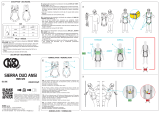 Kong Sierra Duo Benutzerhandbuch
Kong Sierra Duo Benutzerhandbuch
-
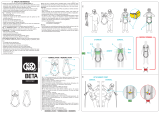 Kong BETA Benutzerhandbuch
Kong BETA Benutzerhandbuch
-
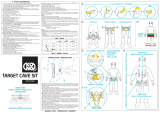 Kong Target Cave Benutzerhandbuch
Kong Target Cave Benutzerhandbuch
-
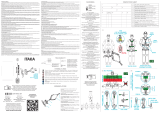 Kong Itaka Benutzerhandbuch
Kong Itaka Benutzerhandbuch
-
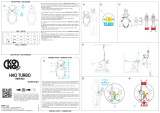 Kong HHO Turbo Benutzerhandbuch
Kong HHO Turbo Benutzerhandbuch
-
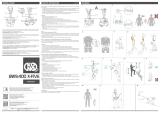 Kong X-FIVE Benutzerhandbuch
Kong X-FIVE Benutzerhandbuch
-
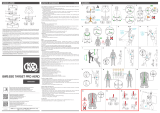 Kong Kit Target Pro Aero Benutzerhandbuch
Kong Kit Target Pro Aero Benutzerhandbuch
-
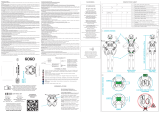 Kong Gogo Benutzerhandbuch
Kong Gogo Benutzerhandbuch
-
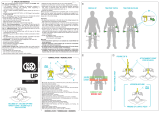 Kong Up Benutzerhandbuch
Kong Up Benutzerhandbuch
-
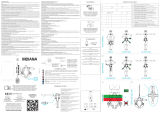 Kong Indiana Benutzerhandbuch
Kong Indiana Benutzerhandbuch











